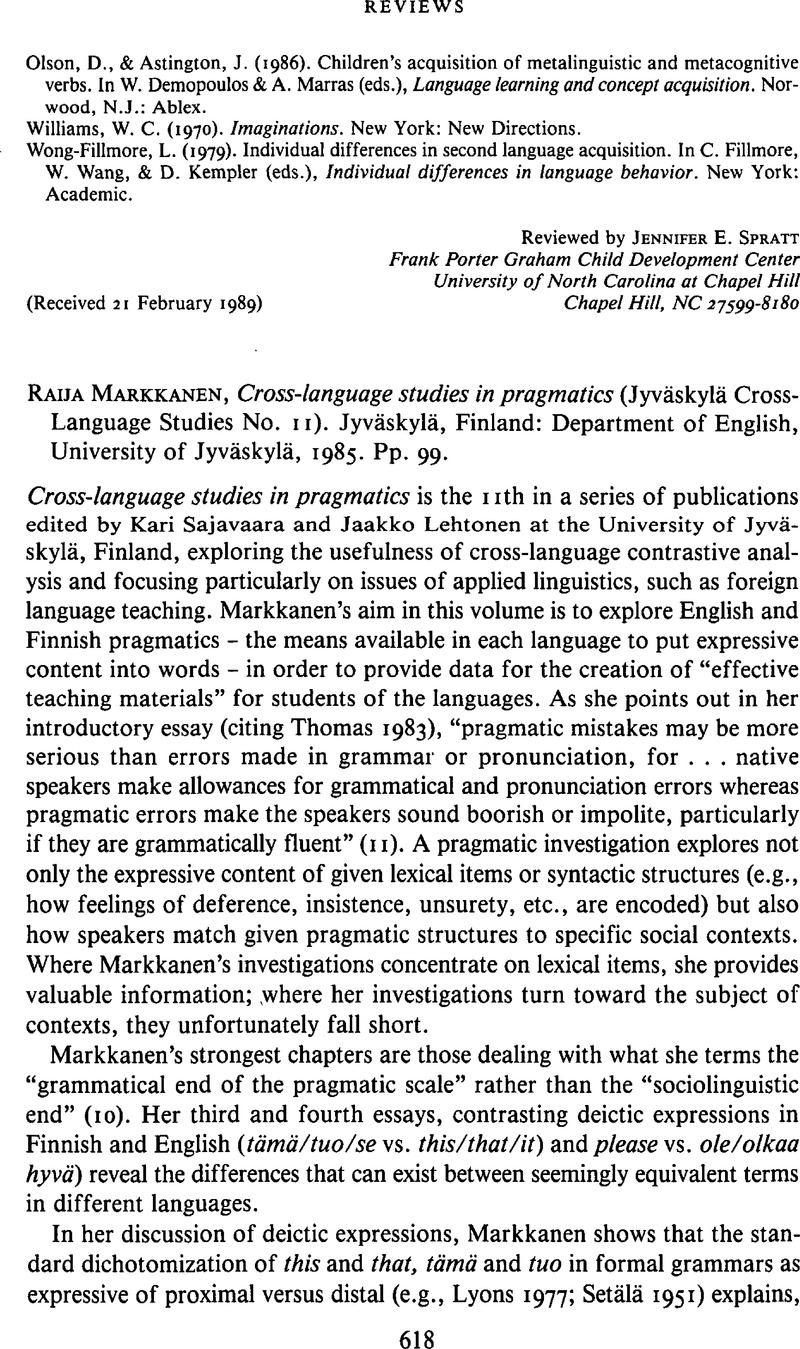Franck, D. (
1981). Seven sins of pragmatics: Theses about speech act theory, conversational analysis, linguistics, and rhetoric. In
Parret, H.,
Sbisa, M., &
Verschuren, J. (eds.),
Possibilities and limitations of pragmatics. Proceedings of the conference on pragmatics. Urbino;
07 8–14, 1974.
Amsterdam:
John Benjamins.
225–36.
CrossRefGoogle Scholar 